Food and drink highlights of Morocco
- Tipping - Leave a tip of 5-10% of the total meal price while visiting restaurant.
- Eating hours -
- Shopping hours - Be patient - in some areas of Morocco, business hours are not always what they say they are.
- Discount shops -
- Cuisine type - Moroccan cuisine with numerous African, Arab, and French influences is considered one of the tastiest in the world.
- Savoir Vivre - If you’re eating with Moroccans you might discover that the hostess will use her hands to give you a piece of meat or a favorite vegetable. Try not to balk at this, it’s an honor and sign of hospitality. You should eat from the triangle that's in front of you. Don’t reach across someone else’s area.
- Main ingredients - The main ingredients used in Moroccan cuisine are beef, poultry, lamb or mutton, lentils, chickpeas, couscous, tomatoes, eggplant, and herbs such as cinnamon, dried ginger, garlic, coriander, and oregano.
- Most popular alcohol - In Islam, alcohol is forbidden. Although hotels and some restaurants offer for their guests relaxed alcohol options.
- Important info - We don’t recommend eating from the food stalls - the food is often low quality and the tap water is not drinkable - it's very harsh on the stomach.
- Warning - Moroccans eat using their right hand, left is considered unclean. So if you’re left handed you may have a little bit of a challenge.
Did you find this information valuable?
Thank you for co-creating with us! 😊 Remember to give us feedback by pressing the thumbs up or down under every section.
The quality of content is essential for us. Please let us know what influenced your opinion.
Thank you!
Foods to try in Morocco
- TajinIt is a type of stew made of meat (chicken, lamb or beef) with vegetables and dried fruit - for example, dates, uts are also often added. It is served with couscous or pita bread. Sometimes you can also find additives such as pickled lemons, olives or almonds.
- BasbousaIt is made from a semolina batter and is cooked in a pan, then sweetened with orange flower water, rose water or simple syrup, and typically cut into diamond shapes.
- HariraIt’s made of cooked meat with chickpeas, lentils and tomatoes, with the addition of cumin, coriander or dates.
- CouscousCouscous with seven vegetables, is one of the most popular versions. Lamb, beef, or chicken is stewed along with a variety of vegetables, then arranged on a glorious heap of tender, steamed couscous grains.
- B’ssaraRich soup of dried broad beans is traditionally served for breakfast, topped with a swirl of olive oil, a sprinkling of cumin and bread fresh from the oven.
Did you find this information valuable?
Thank you for co-creating with us! 😊 Remember to give us feedback by pressing the thumbs up or down under every section.
The quality of content is essential for us. Please let us know what influenced your opinion.
Thank you!
Unusual facts about food in Morocco
- Friday is couscous day – the equivalent of a Sunday roast.
- Tajines are cooked by women and tanjias are cooked by men and the tanjia is limited to meats like beef and lamb and has fewer vegetables or none at all.
- A couscous meal is shared between the members of more traditional families each Friday evening.
- In the northern part of the country children have a lunch break from school, so they can eat at home with their parents.
- Mint tea is internally linked with Moroccan hospitality and culture.
Did you find this information valuable?
Thank you for co-creating with us! 😊 Remember to give us feedback by pressing the thumbs up or down under every section.
The quality of content is essential for us. Please let us know what influenced your opinion.
Thank you!
Place to stay in Morocco
- Best booking sites -
- Seasonality - Accommodation is the most expensive from May to October (high season).
- Cost-effective - In the older parts of cities – the walled Medinas – you can find almost always the cheapest accommodation options like unclassified (non-classé) hotels.
- Formalities - Most types of accommodation will accept reservations by fax or e-mail, requiring a credit card number to confirm the room for you.
- Air conditioning -
- Parking - There is no rule, sometimes even Riads have their parking spaces nearby and often free. However, there are also paid ones. It's best to ask when booking.
- Payments - In Morocco, most of them operate in cash, so you should expect cash payments.
- Local names - You can come across names like Kasbah, Riad or Augerbe.
- Unusual accommodation - Kasbah is a fortress or citadel once inhabited by a sheik. Morocco’s largest and grandest kasbahs are found in the High Atlas mountains in an area nicknamed the route of 1,000 kasbahs. They are typically located on hilltops providing guests with panoramic rooftop views.
- Camp - Morocco has a developed coast along which you can find campsites in most towns.
- Important - In winter, the nights are often cool and not every hotel has heating. Worth seeing the room before check-in.
Did you find this information valuable?
Thank you for co-creating with us! 😊 Remember to give us feedback by pressing the thumbs up or down under every section.
The quality of content is essential for us. Please let us know what influenced your opinion.
Thank you!
Accommodation in Morocco
- A riad is a type of house or palace with an inner courtyard.
- A traditional riad has a garden in the courtyard which is divided into quarters with a fountain in its centre.
- An auberge is a guest house, typically found in rural areas and small villages. Usually auberges are privately owned and family-run.
- Auberges offer guests a more traditional lodging experience than regular hotels but have more facilities than traditional homestays.
- Not every hotel has its own restaurant.
Did you find this information valuable?
Thank you for co-creating with us! 😊 Remember to give us feedback by pressing the thumbs up or down under every section.
The quality of content is essential for us. Please let us know what influenced your opinion.
Thank you!
Getting around Morocco
- Most popular - Buses are the most popular and universal type of domestic transport in Morocco.
- Cost-effective - Buses are a cheaper and more comprehensive alternative to Morocco’s train network.
- Time-efficient - Renting a car can let you travel in the fastest way and where the local transport does not reach.
- Traffic safety - Traveling in Morocco is easy, affordable, and safe. Most of the large cities are very well connected, and local routes are connecting smaller towns and villages.
- Important - Driving on some roads in the mountains may be difficult from December to March due to heavy snowfall.
- Warning - In Morocco, larger cars have the right of way. This traffic rule is not relevant to the European Drivers' Code.
Car
- Moroccans drive on the right side of the road.
- Local drivers drive aggressively and accident rates are high.
- Local car rentals usually offer lower rental fee.
- Go slower than you would in your country, there are a lot of unexpected items on the roads.
Plane
- Morocco’s national airline is Royal Air Maroc.
- It's best to fly into Casablanca’s Mohammed V International Airport or Menara Airport in Marrakesh.
Boat
- Many ferry companies operate between Morocco and various ports in Europe. The most common routes arrive in either Tangier or Ceuta from Algeciras, Tarifa in Spain, or from Britain’s Gibraltar.
- In July and August, Morocco is crowded with expats spending their holidays there. During this period, waiting time for a ferry in Tangier or Ceuta may be extended to even several hours.
Train
- You can't book or purchase train tickets outside of Morocco.
- Trains are divided into 2 classes, first class is typically about USD $15 more expensive and has the ability of booking seats.
- The timetable can be found at www.oncf.ma/en/.
- There are two types of trains: Trains Grandes Lignes (TGL), Trains Navettes Rapides (TNR) and the new Al-Boraq - the fastest train in Africa, each of which is available in 1st and 2nd class.
- The latest achievement of Morocco's transport system is the high-speed train (LGV), which is also the first high-speed train in Africa, reaching 320 km / h. The high-speed train connects Tangier and Casablanca in 2 hours and 10 minutes instead of the normal 5-hour train journey.
Bus
- Some smaller companies often don’t operate on a schedule and may not leave a station until they’re full.
- You can purchase tickets on carrer's websites or at a bus station.
- Souq bus is the cheapest bus you can travel across the country.
Taxi
- There are two types of taxis in Morocco - grand and petit. Grand taxis are shared taxis that carry up to six passengers. Petit taxis are a smaller option for travelling from point to point.
- Petit taxis don’t go outside of the city.
- Grand taxis are best to move between cities.
- Please note that after 20:00, the fare is 50% more than during the day (than the taximeter shows if it is).
- Taxis are quite cheap, but as they do not have taximeters, you have to specify the length of the route before entering the cab.
Hitchhiking
- Traveling by hitchhiking in Morocco may not be as easy as it seems., It should be noted that the northern zone of Ketama and the Rif mountains is a region of drug production, smuggling and trafficking posing a greater risk than in the rest of the country.
- There is no real physical danger to hitchhikers in Morocco, but it is undoubtedly the least practical way to travel. However women should be careful.
- In general, Moroccans don't like taking strangers to their car and stop much less for hitchhikers. Most often, people you see by the side of the road don't stand there to hitch a ride, but wait for a taxi or bus.
- If you want to hitchhike in Morocco, you can sometimes risk standing up for hours before picking up. And if you are lucky, you will find a lift and even get an invitation to stay overnight and be hosted.
Did you find this information valuable?
Thank you for co-creating with us! 😊 Remember to give us feedback by pressing the thumbs up or down under every section.
The quality of content is essential for us. Please let us know what influenced your opinion.
Thank you!
How to travel in Morocco
- Speaking French may help you get better prices on transport.
- For travelling around the country you can choose between trains, buses, taxis, rental cars, and even planes.
- Regular flights and ferries connect the country with Europe and the Middle East.
- ONCF buses and trains are fast, air-conditioned and on time.
- Cities usually have a system of city buses to travel around. However, small city taxis (petit taxis) make getting around much easier, especially if you don't know the city.
Did you find this information valuable?
Thank you for co-creating with us! 😊 Remember to give us feedback by pressing the thumbs up or down under every section.
The quality of content is essential for us. Please let us know what influenced your opinion.
Thank you!
Best time to visit Morocco
When to go
- The best time to visit the imperial cities of Morocco without very hot time, it is spring (March-April ) and autumn (October to mid-November). You can expect cold nights and somethimes very hot days, but the temperature is generally pleasant. Although it can sometimes rain.
- If you want to spend your time on the beach, you should go on the Atlantic coast from July to September and on the Mediterranean coast in July and August.
Temperature
- In the southern and southeastern desert areas, the temperatures can be incredibly high. In the higher situated mountainous regions, the temperature drops significantly.
Rainfall
- Outside the desert areas, rainfall occurs mainly in the fall and winter, until March.
Fall
- Fall in Morocco is pretty mild, and the temperatures there are enjoyable. It is time with a lot of sunshine and cooler nights in this season.
Spring
- Temperatures are pleasant and it is sunny. It is the best time to admire the landscape because everything is bright and green.
Summer
- Morocco is the hottest in the summer months. The Sahara desert is so hot that you can only stay there in the morning or on a cooler evening. In the large cities of Morocco there is unbearable heat.
Winter
- On the Mediterranean coast winters are mild and moderately rainy. Moving towards the interior, winters are slightly colder, partly because of the higher altitude.
Did you find this information valuable?
Thank you for co-creating with us! 😊 Remember to give us feedback by pressing the thumbs up or down under every section.
The quality of content is essential for us. Please let us know what influenced your opinion.
Thank you!
Morocco weather Insights
- Morocco's climate changes from season to season and region to region.
- The climate of the country is mainly tropical.
- The coast is characterized by Mediterranean climate.
- In the south of the country, the weather is dry and hot.
- The temperatures can drop dractically during the night.
Did you find this information valuable?
Thank you for co-creating with us! 😊 Remember to give us feedback by pressing the thumbs up or down under every section.
The quality of content is essential for us. Please let us know what influenced your opinion.
Thank you!
Savoir-Vivre in Morocco
- Greetings - To welcome - give a gentle handshake. However, shake gently only if you and the caller are of the same sex.
- Punctuality -
- Dress code - Don't show your arms - have respect for the culture and cover your arms and legs. We suggest wearing linen fabric as the most comfortable while walking around. Don't forget your hat.
- Temple entrance - When trying to enter the mosques (if they are open to infidels at all) or cemeteries, you should exercise extreme caution. Please, don’t treat them as museums and try not to take pictures of yourself with every exhibit.
- Home invitation - If you are invited to a Moroccan home, don't forget to take your shoes off.
- Etiquette - In Maroccan culture, it is common that a man goes ahead of his woman and checks the area for her. He, too, talks to other men and takes care of various errands.
- Drones - We recommend using this map to easily check the applicable restrictions.
Did you find this information valuable?
Thank you for co-creating with us! 😊 Remember to give us feedback by pressing the thumbs up or down under every section.
The quality of content is essential for us. Please let us know what influenced your opinion.
Thank you!
Things not to do in Morocco
- You can expect a merchant in the local souk bazaar to place items on your head or body. Paying 1-2 dirhams will be enough to make them remove the item.
- Carry cash with you - Card payment is not widely accepted.
- Bring toilet paper or tissues everywhere you go.
- Do not try to take photos of police officers, the guards of royal buildings, police patrols or police control points! This is prohibited and the police will order you to remove the photo at best.
- Be careful when crossing the street. Walk confidently, without making any sudden movements. It helps to put your hand up and show the driver to stop and pass you.
Did you find this information valuable?
Thank you for co-creating with us! 😊 Remember to give us feedback by pressing the thumbs up or down under every section.
The quality of content is essential for us. Please let us know what influenced your opinion.
Thank you!
Interesting facts about Morocco
- The Moroccan hammam is a kind of public bathhouse. This is usually a weekly ritual and is considered a social activity with men, women, and children all participating.
- Be prepared to squat in the bathroom - some of them don't have toilet bowl, just a flat porcelain hole in the ground.
- Morocco in Arabic means Al Maghreb which is translated as the place where the sun sets.
- Morocco is located only 8 miles from Europe.
- Berbers make up around 40% of the population.
Did you find this information valuable?
Thank you for co-creating with us! 😊 Remember to give us feedback by pressing the thumbs up or down under every section.
The quality of content is essential for us. Please let us know what influenced your opinion.
Thank you!
Best souvenirs from Morocco 💝
Interesting monuments, beautiful architecture, wonderful climat and excellent gastronomy are the first things that come to mind when we mention Morocco. Check out our guide and choose the best souvenirs that will keep the magic of Morocco as long as possible!
🍺 Beverages
Tea 💲 💲 💲 💲
Morocco has its own tea drinking ritual. It is drunk for every meal, especially in summer, because of its refreshing properties. The most popular is green and mint tea, always served with a lot of sugar.
🛒 Where to buy: markets
💰 Price range: 10 - 30 MAD
🎁 For whom: grandparents, parents, spouse, friends
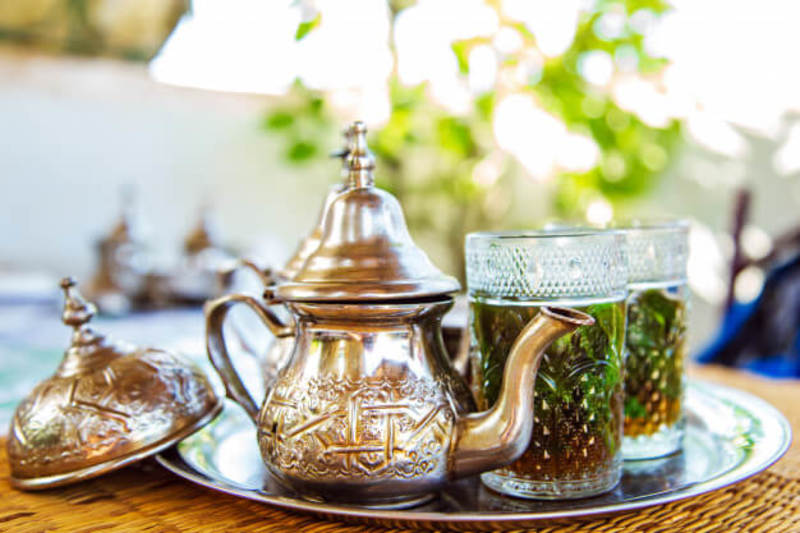
👚 Clothes
Babouches 💲 💲 💲 💲
Usually called slippers or sandals, they are made of leather and have a very unique look. Traditional Babouches have pointed or rounded tips. Shoes come in many bright colors and patterns.
🛒 Where to buy: markets
💰 Price range: 50 - 150 MAD
🎁 For whom: grandparents, parents, friends
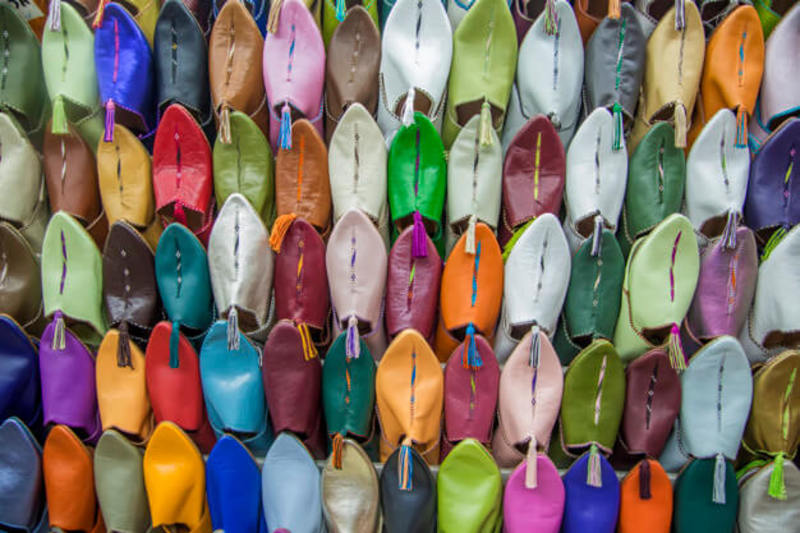
Djellaba 💲 💲 💲 💲
Djellaba is a traditional Moroccan clothing, designed to make the person who wears it feel comfortable, even in high temperatures. Over the years it has been worn by both men and women, but nowadays it is more popular among women.
🛒 Where to buy: markets
💰 Price range: 800 - 2000 MAD
🎁 For whom: spouse
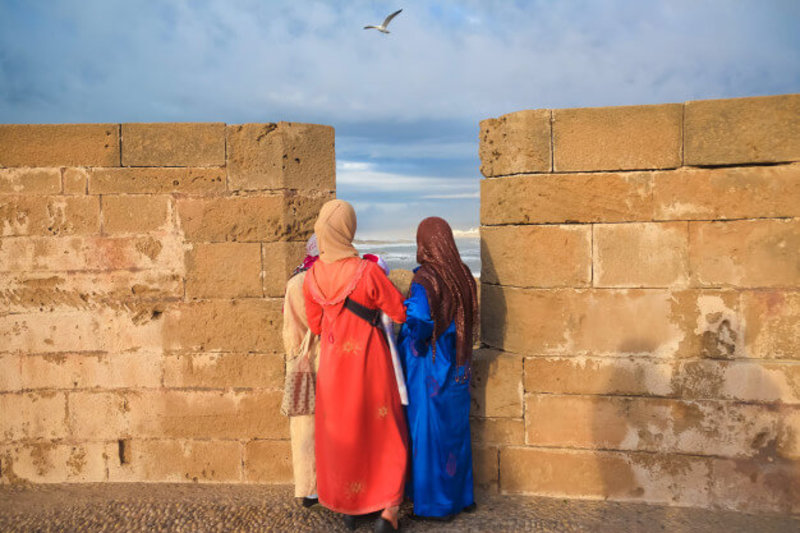
Fez Hat 💲 💲 💲 💲
This hat is associated with the city of Fez and is often related to Eastern culture. The hat itself is round and high and made of felt. There are tassels hanging from the top of the hat. Its red color is due to the special berries growing around the city of Fez.
📌 Region: Fez-Meknes
🛒 Where to buy: markets
💰 Price range: 30 - 70 MAD
🎁 For whom: friends, kids
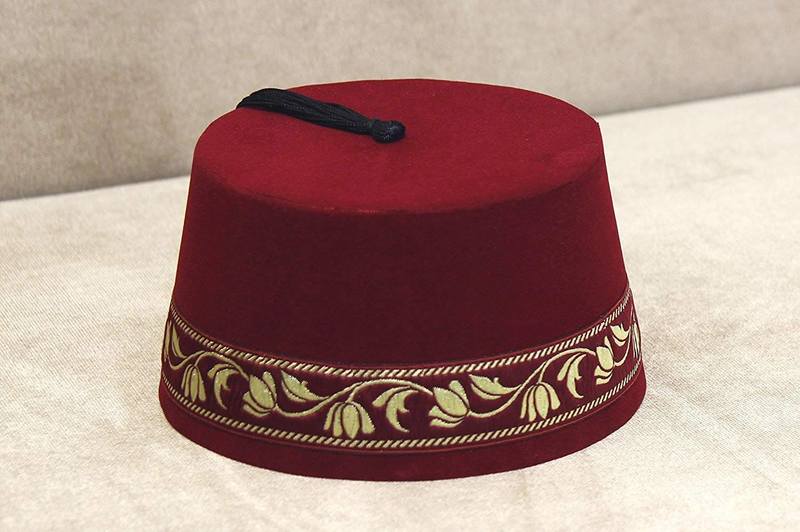
🛍 Collections
Drums 💲 💲 💲 💲
Moroccan music has a unique sound - it is where the cultures of Berbers, Chhawi, Spaniards and Gnawi meet. Without a doubt, the best known and most frequently seen instrument in Morocco is the eardrum, used to taunt the rhythm. It is also a unique souvenir, for everyone who likes oriental sounds.
📌 Region: Sahara
🛒 Where to buy: markets
💰 Price range: 80 - 200 MAD
🎁 For whom: friends, kids
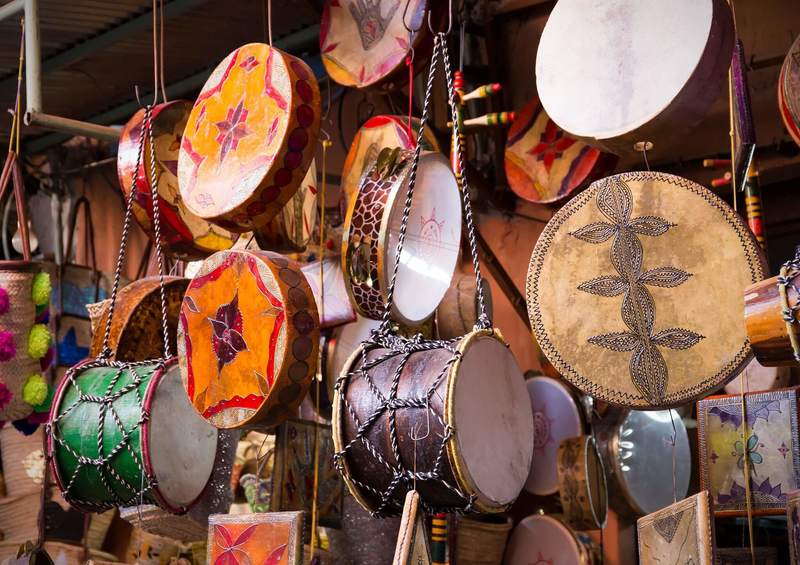
Leather bags 💲 💲 💲 💲
Morocco has been a leader in the production of leather products for many years, so it is easy to find good quality products from this material there. Leather bags and handbags are a real treasure, but other leather products such as jackets are also worth seeing.
🛒 Where to buy: markets, clothing stores
💰 Price range: 100 - 500 MAD
💡 Pro tip: Always check wheter the leateher is real. We recommend reading about how to differentiate real leather from the fake one
🎁 For whom: spouse

Straw basket 💲 💲 💲 💲
They are easy to spot at typical Moroccan fairs. These handmade baskets are also available as bags and handbags. Wicker versions and those made of palm leaves are also popular.
🛒 Where to buy: markets
💰 Price range: 100 - 150 MAD
🎁 For whom: spouse
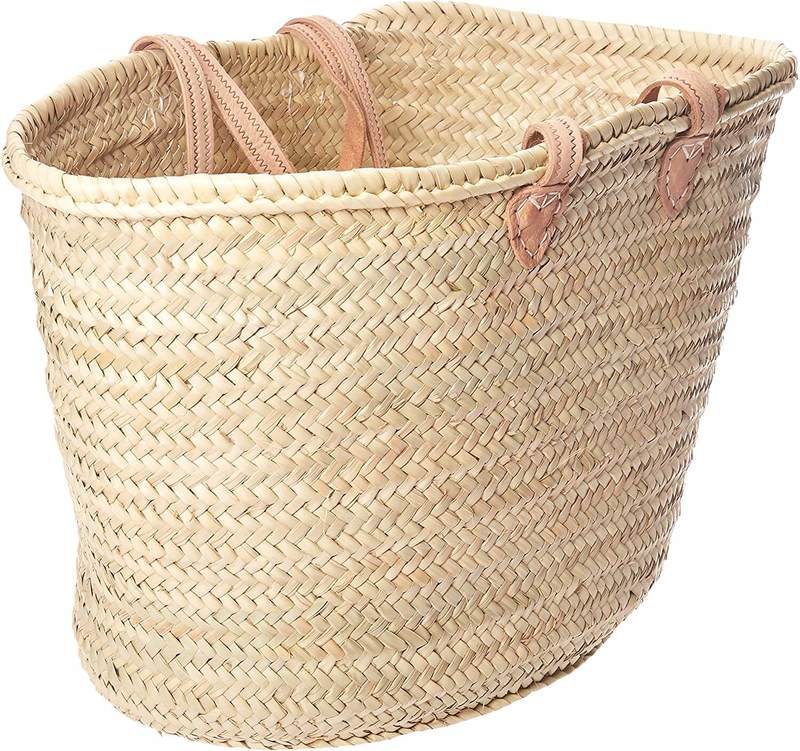
💄 Cosmetics
Black soap 💲 💲 💲 💲
Moroccan black soap has a gel-like consistency. Made of olive oil and eucalyptus, it is an ideal product for skin care thanks to its moisturizing and exfoliating properties.
🛒 Where to buy: markets
💰 Price range: 70 - 120 MAD
🎁 For whom: grandparents, parents, spouse
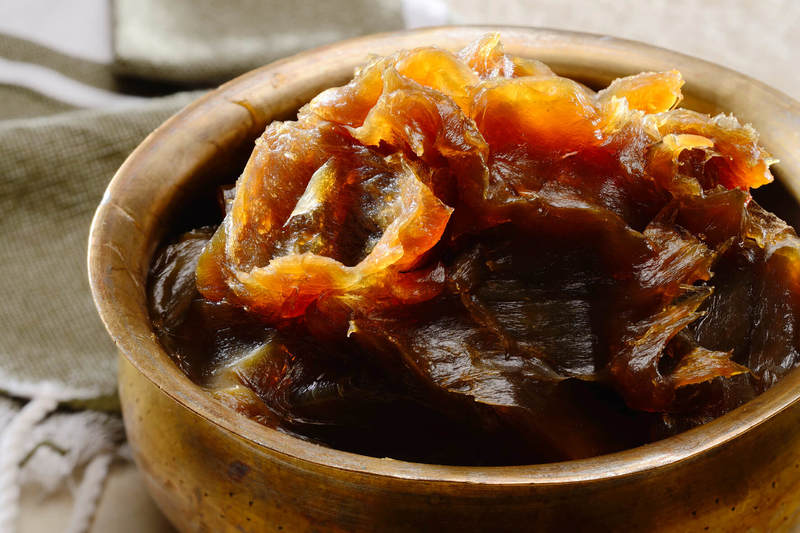
Rose Oil 💲 💲 💲 💲
The production of Moroccan rose oil is closely linked to the Dadely Valley region, where the largest rose plantations can be found. Every year in May, a Rose Festival is held there in honor of the annual harvest.
📌 Region: Ouarzazate
🛒 Where to buy: markets
💰 Price range: 100 - 400 MAD
💡 Pro tip: More expensive does not mean that it is better.
🎁 For whom: grandparents, parents, spouse

🥗 Food
Argan Oil 💲 💲 💲 💲
Made from argan tree fruit extract, the oil is used in the cosmetics and catering industry. Production of oil is time-consuming, but the final result is worth the effort, as every Moroccan knows!
📌 Region: Marrakesh-Safi
🛒 Where to buy: dedicated shops, gift shops
💰 Price range: 50 - 300 MAD
💡 Pro tip: Avoid cheap argan oil as it has poor quality, best quality bottles cost around 150 Dhs - 200 Dhs. Pay attention to right the colour (dark yellow) and texture (clear).
🎁 For whom: grandparents, parents, spouse, friends
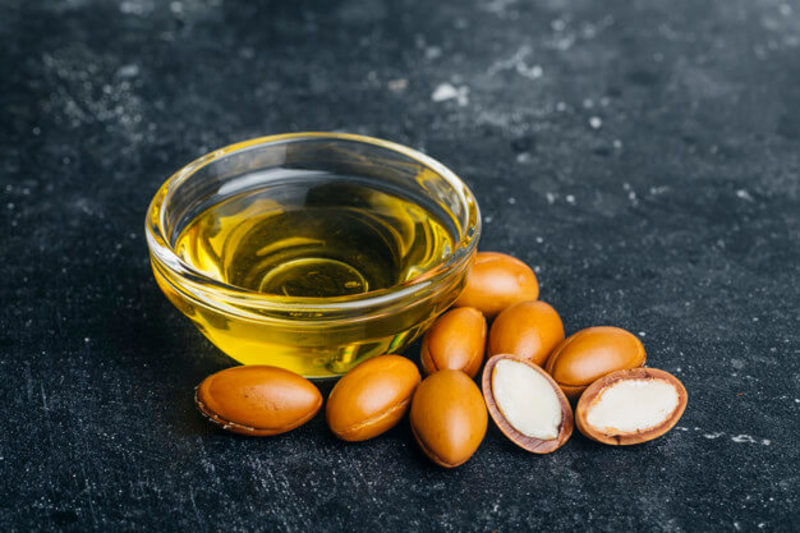
Ras El Hanout 💲 💲 💲 💲
A traditional mix of spices that can be found in many Moroccan dishes. The mix can contain up to 30 spices such as cinnamon, cumin, ginger, pepper or thyme.
🛒 Where to buy: markets
💰 Price range: 150 - 250 MAD
💡 Pro tip: Best place to buy it fresh, is a local market.
🎁 For whom: grandparents, parents, spouse, friends

Saffron 💲 💲 💲 💲
Saffron is called "king of spices". The origin of this most expensive spice in the world is attributed to the regions of north-western Africa and the Middle East. You can easily find it on local bazaars.
📌 Region: Taroudant
🛒 Where to buy: markets
💰 Price range: 250 - 400 MAD
🎁 For whom: grandparents, parents, spouse, friends
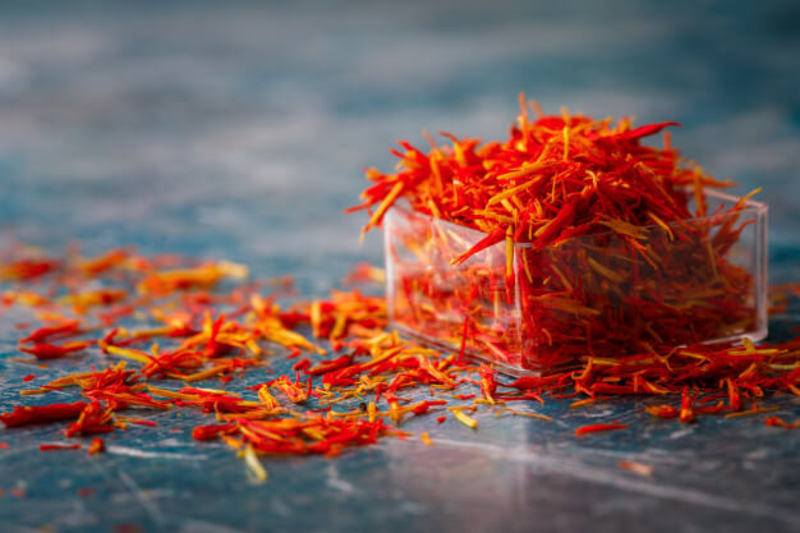
🖖 Handmade
Wooden carvings 💲 💲 💲 💲
The most famous wooden products are those made of cedar trees. You will find them in the form of small sculptures representing animals or in the form of small boxes for storing personal belongings. The products are often decorated with small engravings.
📌 Region: Marrakesh-Safi
🛒 Where to buy: dedicated shops
💰 Price range: 50 - 150 MAD
🎁 For whom: grandparents, parents, spouse, friends
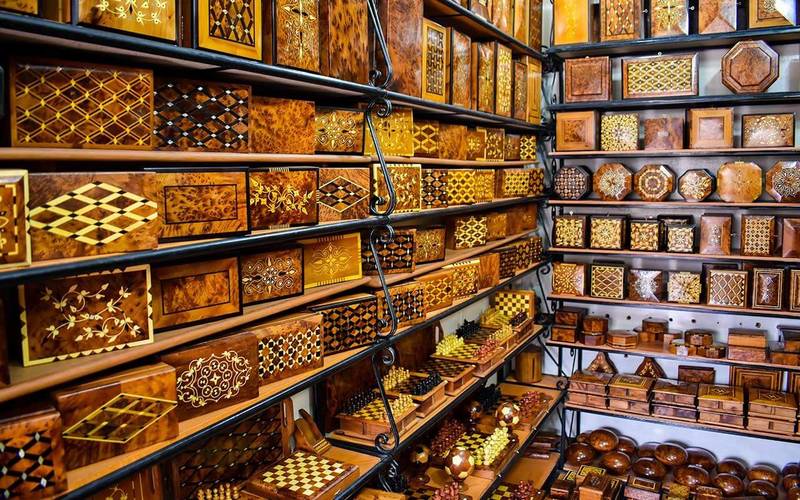
Zellige 💲 💲 💲 💲
Zellige are nothing other than small, colorful tiles that can be arranged in patterned mosaics. It is known in the world for its unique patterns, often accompanied by a palette of colors - white, blue, yellow and red.
📌 Region: Fez-Meknes
🛒 Where to buy: markets, dedicated shops, Zellige factories
💰 Price range: 50 - 1000 MAD
🎁 For whom: grandparents, parents
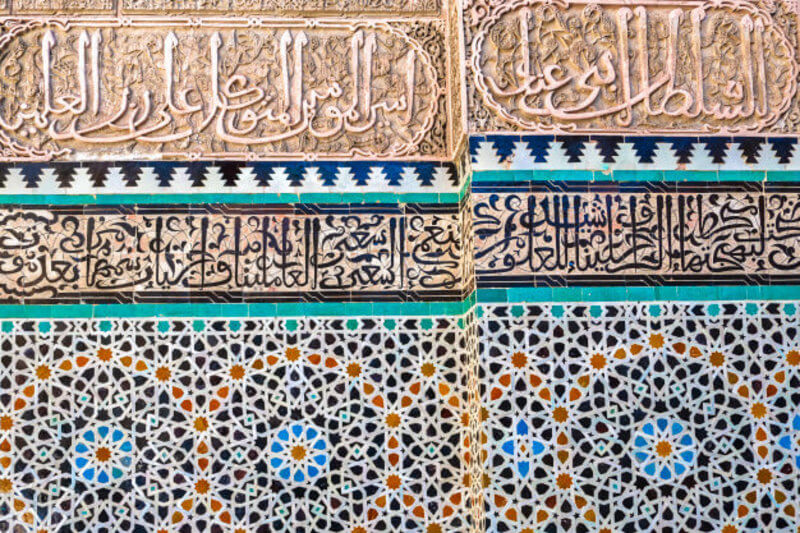
🏡 Home Decor
Berber Carpets 💲 💲 💲 💲
Berber carpets are a hand-made product known for its unusual patterns and exceptional quality.
🛒 Where to buy: markets
💰 Price range: 1000 - 4500 MAD
💡 Pro tip: It is best to bargain a lot as you may come down to more affordable prices.
🎁 For whom: grandparents, parents, spouse
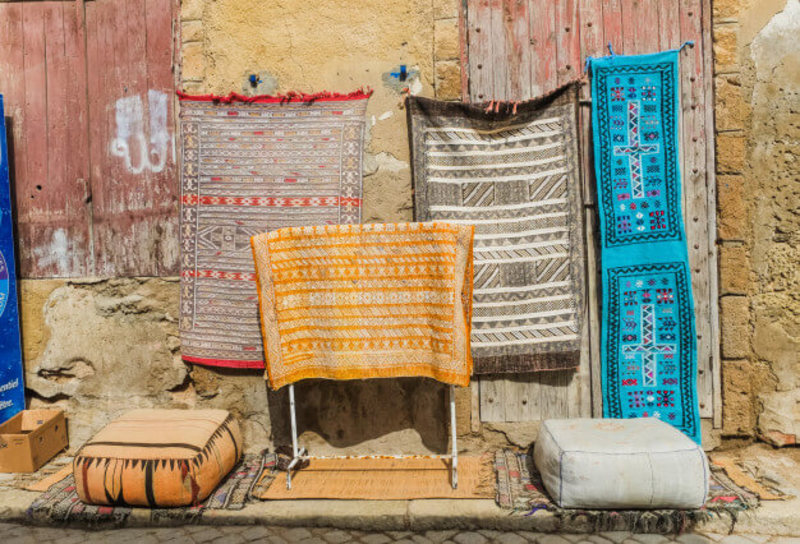
Ceramics 💲 💲 💲 💲
Moroccan ceramics have been produced for centuries. It all started with the Berbers, who as mastered the technique of its production. The colorful products are painted in typical Mediterranean patterns with clear liquors of Eastern culture.
🛒 Where to buy: markets
💰 Price range: 50 - 300 MAD
🎁 For whom: grandparents, parents
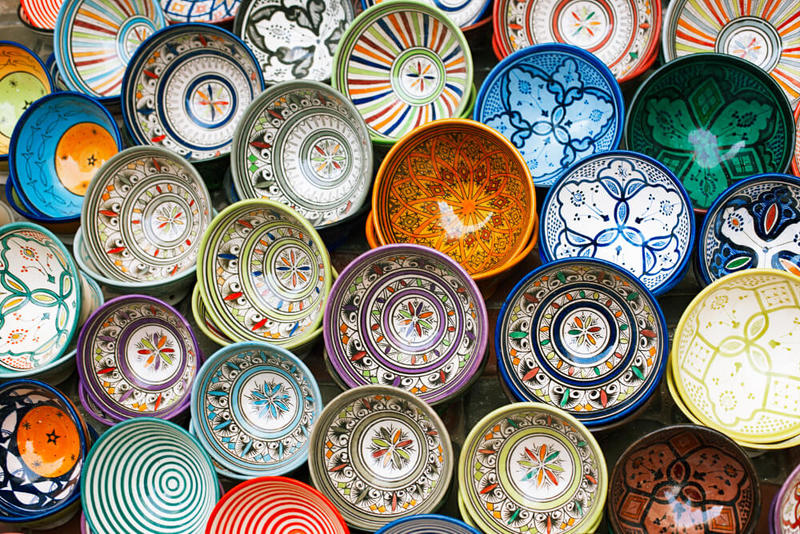
Glasses 💲 💲 💲 💲
Glasses are most often used to drink mint tea, which is a frequent drink for meals. You can buy them in the form of plain transparent glasses or colored, with rich decorations.
🛒 Where to buy: markets
💰 Price range: 90 - 150 MAD
🎁 For whom: grandparents, parents
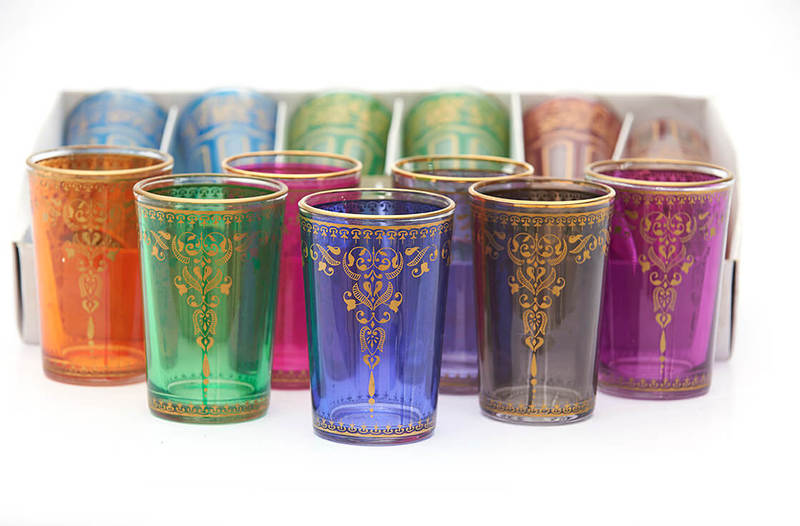
Lamps 💲 💲 💲 💲
These characteristic oriental lamps are made of metal alloys and colored slides. If you are looking for something that will surprise you with its colors, it is worth to wait for the flashlights.
🛒 Where to buy: markets
💰 Price range: 100 - 700 MAD
💡 Pro tip: Do not buy it if you have small baggage or you can not fit it properly (it may bend or crush).
🎁 For whom: grandparents, parents, spouse
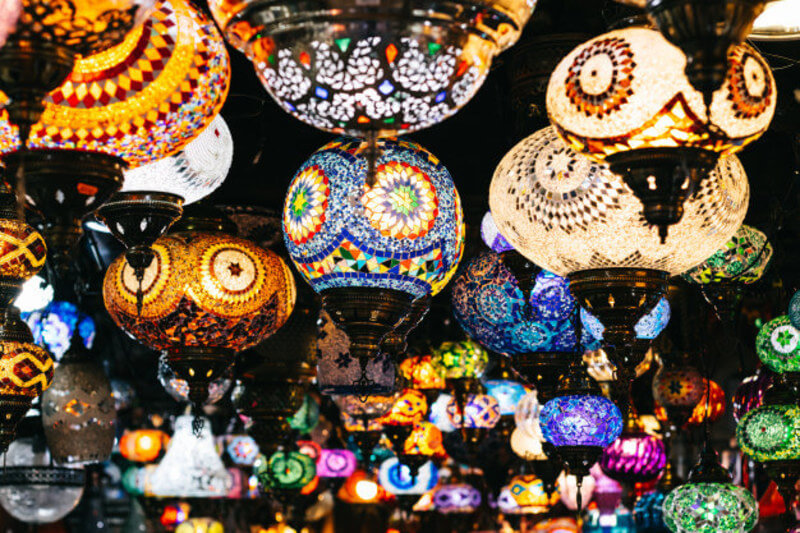
Metalworks 💲 💲 💲 💲
Morocco has a rich history of producing metal products. The Berbers played a special role in the development of metalworking techniques. There are many types of metal products that are worth buying, from pots, plates, chests to jewelry.
📌 Region: Fez-Meknes
🛒 Where to buy: markets
💰 Price range: 100 - 500 MAD
🎁 For whom: grandparents, parents
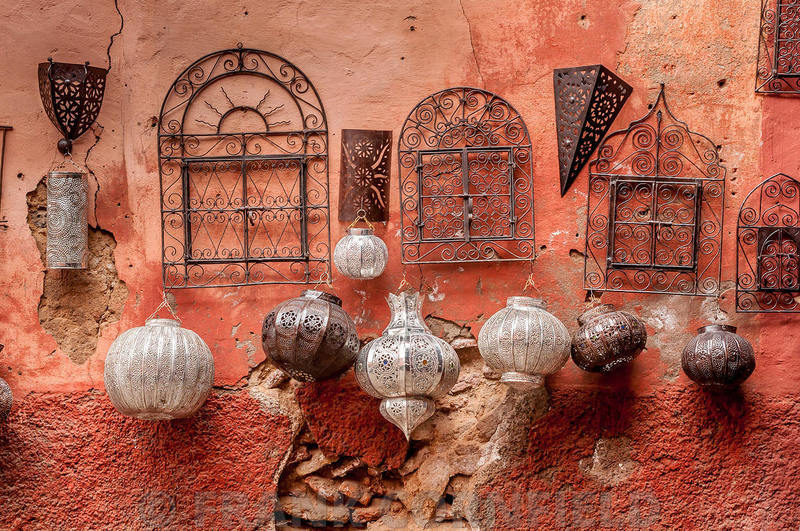
Tajine 💲 💲 💲 💲
Tajine is a kind of platter, but it is used both for preparing and serving food. It is shaped like a large plate with a dish in the middle. Historically, Tajine was used by the nomadic peoples of Morocco to heat food with steam and keep it warm.
🛒 Where to buy: markets
💰 Price range: 90 - 200 MAD
🎁 For whom: grandparents, parents
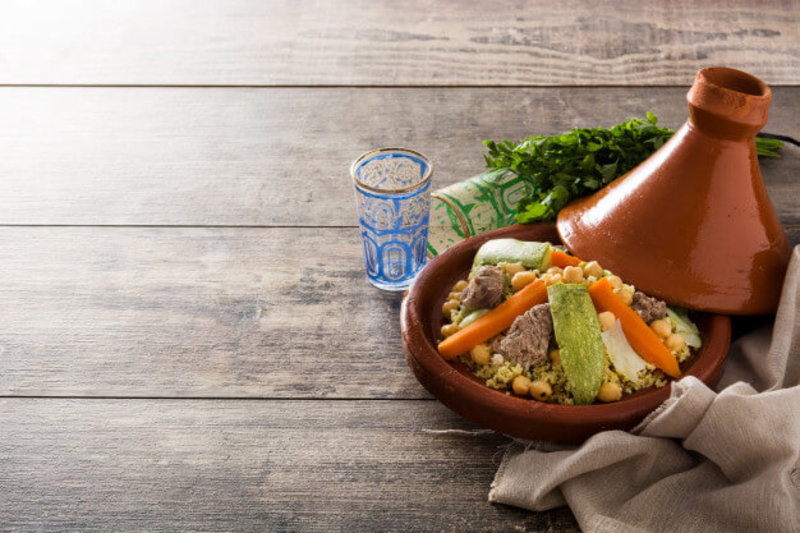
Teapots 💲 💲 💲 💲
These artisanal products are made of metal - aluminum, brass or silver. Kettles are an important element in the Moroccan tea drinking ritual. They are ideal not only for brewing drinks, but also as an elegant decoration for your home.
📌 Region: Fez-Meknes
🛒 Where to buy: dedicated shops
💰 Price range: 50 - 150 MAD
🎁 For whom: grandparents, parents
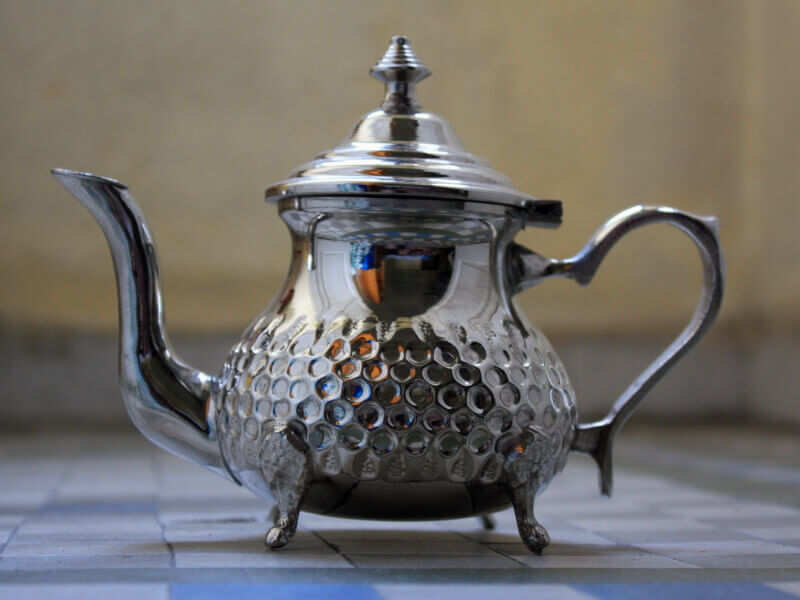
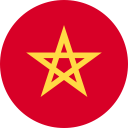 Morocco - Souvenirs
Morocco - Souvenirs
We hope that in this article you have found some suggestions of souvenirs from Morocco that you liked! Or maybe you have a different idea of what to bring your loved ones from this country? Be sure to write!
Did you find this information valuable?
Thank you for co-creating with us! 😊 Remember to give us feedback by pressing the thumbs up or down under every section.
The quality of content is essential for us. Please let us know what influenced your opinion.
Thank you!
Morocco packing list 💡
- The right outfit - When traveling around Morocco, avoid skimpy outfits that reveal your shoulders, thighs or neckline. This also applies to men who should not wear shorts.
- Cash - Not all credit cards are accepted, so you cannot be sure of this method of payment. Money can be exchanged only officially in designated areas.
- Green card - If you decide to get behind the wheel of your own car.
- Travel insurance - It may be useful to have insurance covering high-risk sports, such as horse riding.
- Probiotics - Aid in the prevention and first aid intestinal.
Did you find this information valuable?
Thank you for co-creating with us! 😊 Remember to give us feedback by pressing the thumbs up or down under every section.
The quality of content is essential for us. Please let us know what influenced your opinion.
Thank you!
Get a personalized packing list before travel to Morocco 🧳
Health information
Health risks and required vaccinations
Packing lists
Personalized item list to pack matching your destination
Weather insights
Packing list adjusted to local weather
To-do lists
Everything you need to do before leaving home
Weight limits
Never pay excess baggage fees again
Local prices
Average cost of food, tickets and accommodation
Tourist information about Morocco
| Country | Morocco |
| Capital | Rabat |
| Currency | Moroccan dirham |
| Language | Arabic, Berber |
| Timezone | GMT+1 |
| English speaking | Not widely spoken |
| LGBT tolerance | Low |
| Gender ratio (overall) | 50% | 50% |
| Population | 36.9 mln |
| Visitors per year | 12.9 mln |
Did you find this information valuable?
Thank you for co-creating with us! 😊 Remember to give us feedback by pressing the thumbs up or down under every section.
The quality of content is essential for us. Please let us know what influenced your opinion.
Thank you!
Useful information about Morocco
| Card payments | |
| ATM Availability | Major cities |
| Suggested ATM takeout | 1000 MAD |
| Drinking in public | |
| Tap water | |
| Internet speed (avg.) | 35 Mbps |
| Socket type |
|
| Best taxi app | |
| Public toilets | Popular & Paid |
| Top mobile providers | Itissalatt Al-Maghrib, Orange Morocco, Inwi |
| Best internal air carrier | Air France |
Did you find this information valuable?
Thank you for co-creating with us! 😊 Remember to give us feedback by pressing the thumbs up or down under every section.
The quality of content is essential for us. Please let us know what influenced your opinion.
Thank you!
Cost of living in Morocco
| Meal, Inexpensive Restaurant |
2.79 EUR
3.29 USD
2.44 GBP
11.77 PLN
30 MAD
|
| Meal for 2 People, Mid-range Restaurant |
18.61 EUR
21.92 USD
16.24 GBP
78.45 PLN
200 MAD
|
| Domestic Beer (0.5 liter draught) |
2.79 EUR
3.29 USD
2.44 GBP
11.77 PLN
30 MAD
|
| Gasoline (1 liter) |
0.95 EUR
1.12 USD
0.83 GBP
4.02 PLN
10.25 MAD
|
| One-way ticket (public transport) |
0.47 EUR
0.55 USD
0.41 GBP
1.96 PLN
5 MAD
|
Did you find this information valuable?
Thank you for co-creating with us! 😊 Remember to give us feedback by pressing the thumbs up or down under every section.
The quality of content is essential for us. Please let us know what influenced your opinion.
Thank you!
Quality of life in Morocco
| Quality of life | Moderate |
| Safety Index | Moderate |
| Healthcare likability | Moderate |
| Climate likability | Very high |
| Costs of living | Very low |
| Level of pollution | High |
Did you find this information valuable?
Thank you for co-creating with us! 😊 Remember to give us feedback by pressing the thumbs up or down under every section.
The quality of content is essential for us. Please let us know what influenced your opinion.
Thank you!
Important numbers
| General emergency number (mobile phone) | 112 |
| Fire | 15 |
| Police | 19 |
| Ambulance | 15 |
Did you find this information valuable?
Thank you for co-creating with us! 😊 Remember to give us feedback by pressing the thumbs up or down under every section.
The quality of content is essential for us. Please let us know what influenced your opinion.
Thank you!

